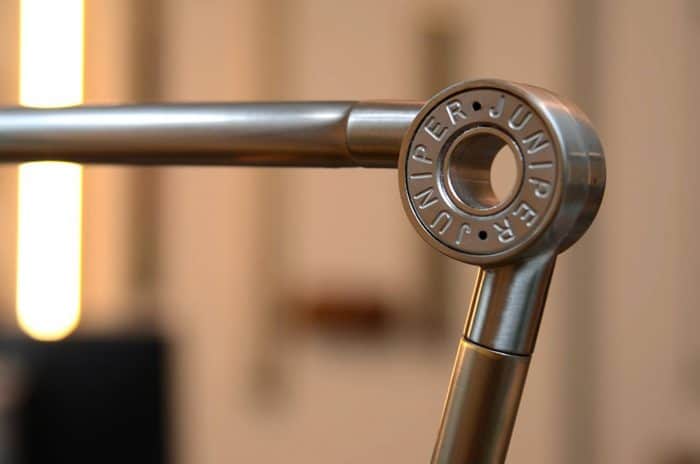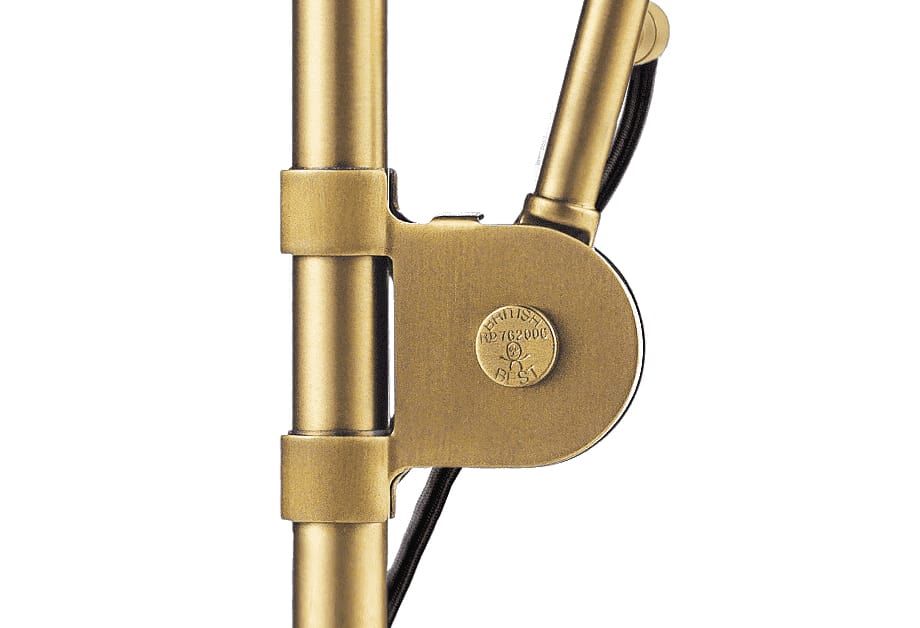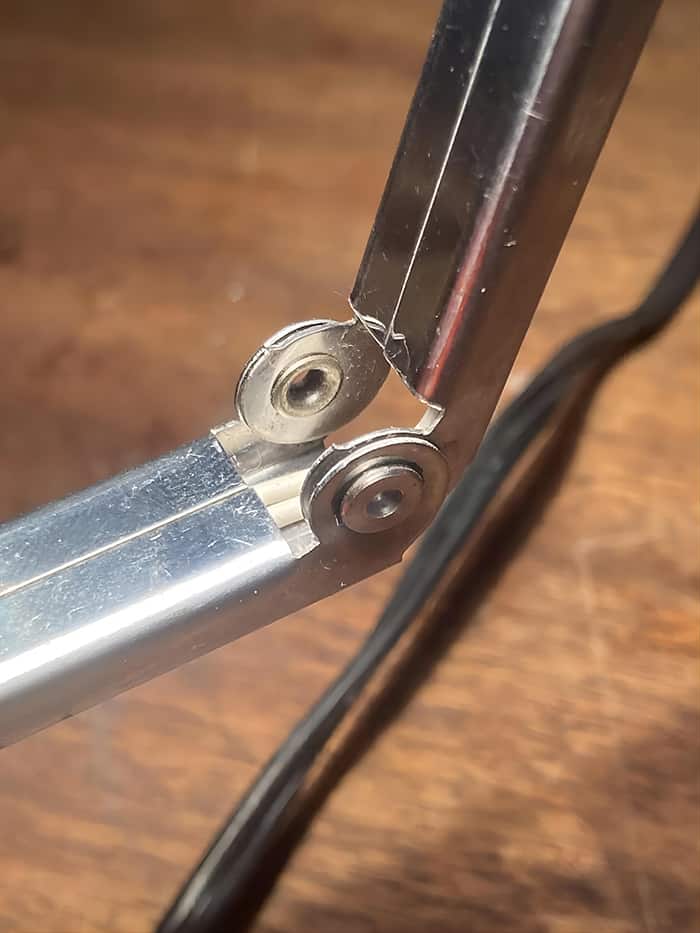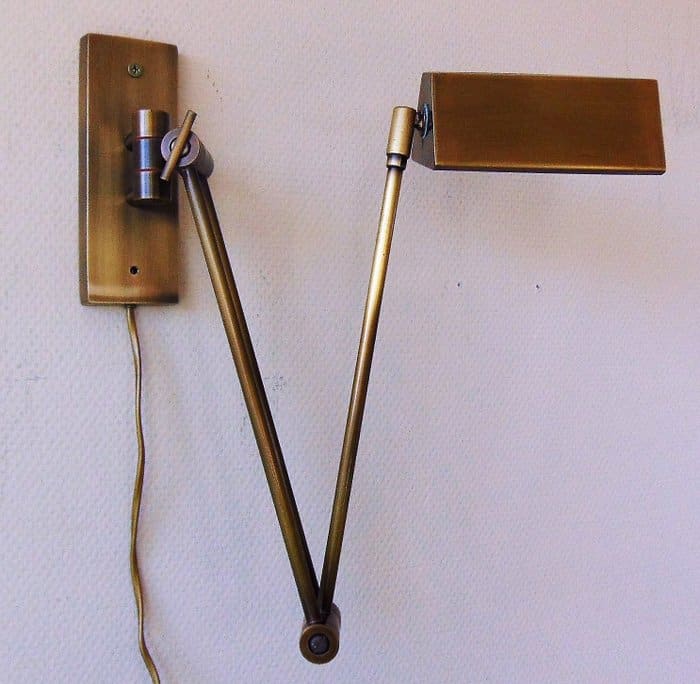Lamp hinges, which refers to a type of hinge used for lamps. Lamp hinges are essential components that connect the lampshade and the lamp base, typically made of metal. This type of hinge allows the lampshade to rotate upward or downward as needed. Adjusting the direction and angle of the light. Lamp hinges can also change the angle between the lampshade and the lamp base. Providing more lighting options. In the lamp manufacturing industry, lamp hinges are a common accessory. With different types and sizes available depending on the lamp type and brand.
In this article, I’ll delve into the various aspects of lamp hinges and why they are an essential part of any lamp.
What are Lamp Hinges?
Lamp hinges are crucial mechanical components that play a vital role in connecting the lampshade to the base of a lamp. Their primary function is to enable the lampshade to pivot and move. Allowing for the adjustment of the light angle and direction. These hinges come in various shapes and sizes. Making them suitable for different types and weights of lampshades.
The construction material of lamp hinges is crucial to ensure their strength and durability. Typically, high-quality metals such as brass, chrome, or nickel are used to manufacture them. These materials are known for their sturdiness and resilience. Making them ideal for supporting the weight of the lampshade and withstanding constant movements.
Lamp hinges also come with different features, such as locking mechanisms or adjustable tension. To improve their functionality and stability. For instance, a locking mechanism ensures that the lampshade remains securely in place, while adjustable tension allows for easy adjustments of the hinge’s resistance. These features make lamp hinges more versatile, enhancing their ability to adapt to different lighting requirements and preferences.

Types of Lamp Hinges
There are different types of lamp hinges available in the market. Some of the most popular types include:
Piano Hinges:
Piano hinges are long and narrow hinges that are used to attach the lampshade to the base. They are strong and durable and can support heavy lampshades. The piano hinges used on lamps are generally lighter. When heavier objects need to be carried, we use heavy-duty piano hinges, as IHINGES describes. It is important to note that piano hinges are also known as continuous hinges.
Butt Hinges:
Butt hinges are compact and ideal for smaller lamps. They are easy to install and provide good stability to the lampshade.
Benefits of Lamp Hinges
Lamp hinges are an indispensable component in lamps that provide numerous benefits. Making them an essential part of the lighting industry.
One of the primary benefits of lamp hinges is their durability. These hinges are constructed using high-quality materials such as brass, chrome, or nickel. Making them robust and resilient enough to support the weight of the lampshade. Their sturdy construction ensures that they can withstand constant use and movements without breaking. Or wearing out easily, thus providing long-lasting performance.
Flexibility is another benefit offered by lamp hinges. They provide an easy and adjustable connection between the lampshade and the base. Allowing for quick and effortless adjustments of the light angle and direction. This flexibility enables you to direct the light where you need it. Creating the desired lighting ambiance and mood for your room. Whether you want to focus the light on a specific area or diffuse it to create a softer ambiance, lamp hinges make it possible.
Additionally, lamp hinges come in various designs and shapes, providing the flexibility to adapt to different lamp models and styles. This variety ensures that you can find a hinge that fits your lamp’s specific needs. Allowing you to customize your lamp to your preferences.
In summary, lamp hinges offer numerous benefits. Including durability, flexibility, and versatility. Their sturdy construction and easy adjustability make them essential in creating a perfect lighting environment in any room. Whether you need a lamp for reading, working, or relaxing, lamp hinges offer the support. And flexibility required to achieve the perfect lighting ambiance.

Design Considerations for Lamp Hinges
Design considerations are essential when selecting the appropriate lamp hinges for your lighting needs. Here are some crucial design factors to keep in mind when choosing lamp hinges:
Size is a critical consideration when selecting lamp hinges. The size of the hinge should match the size and weight of your lampshade. A hinge that is too small may not support the weight of the lampshade adequately, while a hinge that is too large can look awkward and out of place. Therefore, it’s important to select the right size hinge to ensure the perfect fit and functionality.
Material is another essential design consideration when choosing lamp hinges. While metal is the most common material used for lamp hinges due to its strength and durability. You can also find them in other materials such as plastic and wood. Each material has its unique features and benefits. Such as plastic being lightweight and wood being aesthetically pleasing. The material you choose will depend on your personal preference, the style of your lamp, and the intended use.
Locking mechanisms and adjustable tension are additional design considerations when selecting lamp hinges. Some hinges come with locking mechanisms that secure the lampshade in place. Preventing it from moving or rotating. Adjustable tension, on the other hand, allows you to adjust the resistance of the hinge. Making it easier or harder to move the lampshade. These features can enhance the functionality and versatility of your lamp. Enabling you to create a personalized lighting ambiance.
Lastly, the design style and shape of the lamp hinges can also influence your selection. Lamp hinges come in various shapes and designs. Such as rectangular, round, or arched. Choosing a hinge that complements the style of your lamp can enhance its overall appearance and improve its functionality.
Installation
Installing lamp hinges is a straightforward process that requires minimal effort and basic tools. Here’s a step-by-step guide to help you install your lamp hinges successfully:
Step 1: Prepare Your Workspace
Start by preparing your workspace. Clear a flat surface, and gather all the necessary tools and materials. Including your new lamp hinges, a screwdriver, screws, and a pencil.
Step 2: Remove the Existing Hinges
If your lamp already has hinges, remove them by unscrewing the screws that hold them in place. Gently remove the old hinges and set them aside.
Step 3: Align the New Hinges
Align the new hinges on the lampshade and base, ensuring that they are correctly positioned. Use a pencil to mark the screw holes for the new hinges. Making sure that they align with the existing holes on the lamp.
Step 4: Screw in the New Hinges
Using a screwdriver, screw in the new hinges carefully. Ensuring that they are secure and stable. It’s essential to follow the manufacturer’s instructions carefully to avoid damaging the lamp or the hinges.
Step 5: Test the Hinges
Once you’ve screwed in the new hinges, test them by moving the lampshade back and forth. To ensure that they are functioning correctly. If the lampshade moves too loosely or too tightly. Adjust the hinge tension as per the manufacturer’s instructions.
Step 6: Reassemble the Lamp
Reassemble the lamp by reconnecting the wiring and inserting the light bulb. Turn on the lamp and test its functionality to ensure that everything is working correctly.
In summary, installing lamp hinges is a simple process that can be accomplished with basic tools. By following these steps, you can easily install your lamp hinges. And enjoy the benefits they provide. Such as durability, flexibility, and versatility.

Maintenance
Lamp hinges are an essential component of any lamp. And keeping them in good condition is crucial for the smooth functioning of your lamp. Here are some tips to help you maintain and care for your lamp hinges:
1. Regular Cleaning
Regular cleaning of your lamp hinges is crucial to keep them in good working condition. Dust and dirt can accumulate on the hinges. Making them stiff and difficult to adjust. To clean your hinges, use a soft cloth and a gentle cleaning solution. Avoid using harsh chemicals or abrasive cleaners that can damage the surface of the hinges.
2. Lubrication
Lamp hinges require lubrication to keep them moving smoothly. Apply a small amount of lubricant. Such as WD-40, to the hinges periodically to prevent rusting and ensure that the hinges move freely. However, be careful not to over-lubricate as this can attract dust and dirt, leading to clogging of the hinges.
3. Avoid Overloading
Avoid overloading your lampshade beyond the weight capacity recommended by the manufacturer. Overloading can put undue pressure on the hinges. Leading to damage and decreased durability.
4. Store Properly
If you need to store your lamp, ensure that you store it in a dry and dust-free place. Remove the lampshade and store it separately from the lamp base to avoid any damage to the hinges.
In summary, regular maintenance and care are essential to keep your lamp hinges in good condition. By following these tips, you can extend the life of your lamp hinges and ensure that your lamp functions smoothly. And efficiently for years to come.

Applications
Lamp hinges are a crucial component in many types of lamps. And they come in various shapes and sizes to suit different types of lamps. Here are some of the most common types of lamps that use lamp hinges:
1. Desk Lamps
Desk lamps are typically used for task lighting, such as reading or writing. They are small and compact, and often have an adjustable arm with a lampshade. That can be pivoted to direct the light where it’s needed. Lamp hinges are used to connect the lampshade to the arm and allow for easy adjustment.
2. Floor Lamps
Floor lamps are tall lamps that are designed to stand on the floor. They come in various styles, ranging from modern to traditional. And are often used for ambient lighting or as a decorative piece. Lamp hinges are used to connect the lampshade to the stand. Allowing the lampshade to be adjusted to different angles.
3. Table Lamps
Table lamps are a common type of lamp used for task lighting or as a decorative piece on a table or desk. They come in various styles and sizes. And lamp hinges are used to connect the lampshade to the base, allowing for easy adjustment.
4. Reading Lamps
Reading lamps are designed specifically for reading and task lighting. They typically have an adjustable arm with a lampshade. That can be tilted and pivoted to direct the light where it’s needed. Lamp hinges are used to connect the lampshade to the arm and allow for easy adjustment.
5. Accent Lamps
Accent lamps are small lamps used to add ambiance and accent lighting to a room. They come in various shapes and sizes and are often used as decorative pieces. Lamp hinges are used to connect the lampshade to the base. Allowing for easy adjustment and customization of the light direction.
In summary, lamp hinges are a versatile and important component in many types of lamps. Providing flexibility and adjustability to direct light where it’s needed.
Cost
The cost of lamp hinges varies depending on the type and size you need. However, they are relatively affordable and can be easily replaced if they become damaged.
In my personal experience, lamp hinges are an essential component of any lamp. Offering durability, flexibility, and stability. Whether you’re looking to replace old hinges or upgrade your lamp. Understanding the different aspects of lamp hinges can help you make an informed decision.













